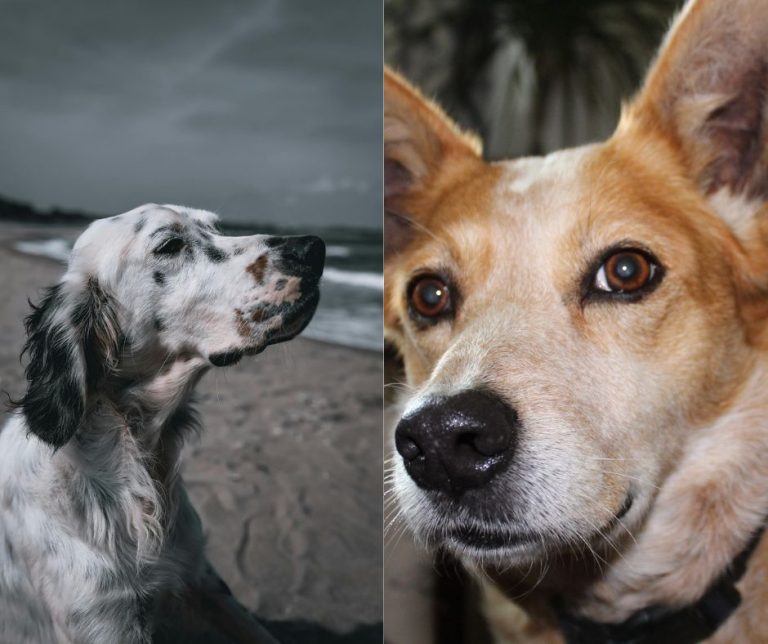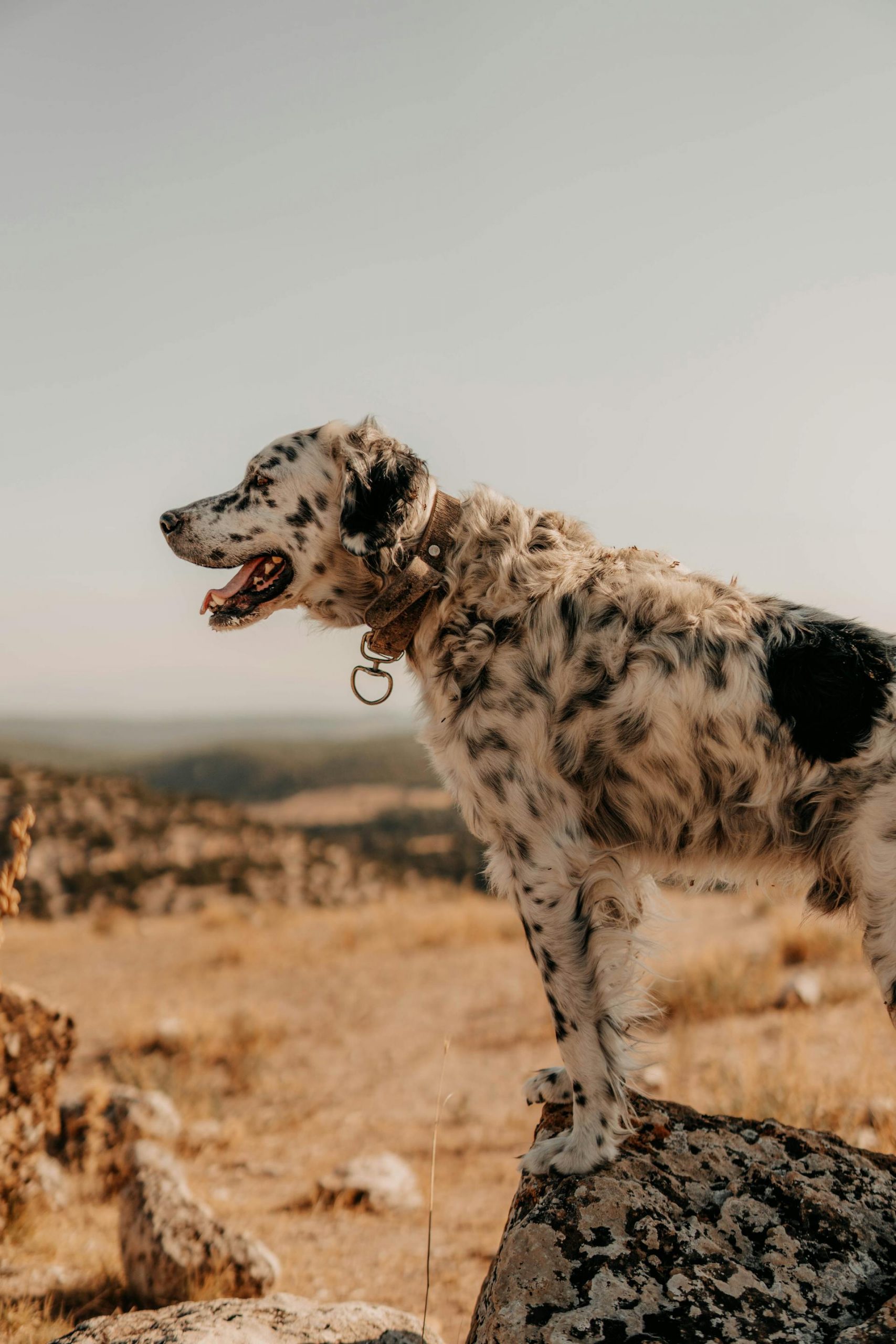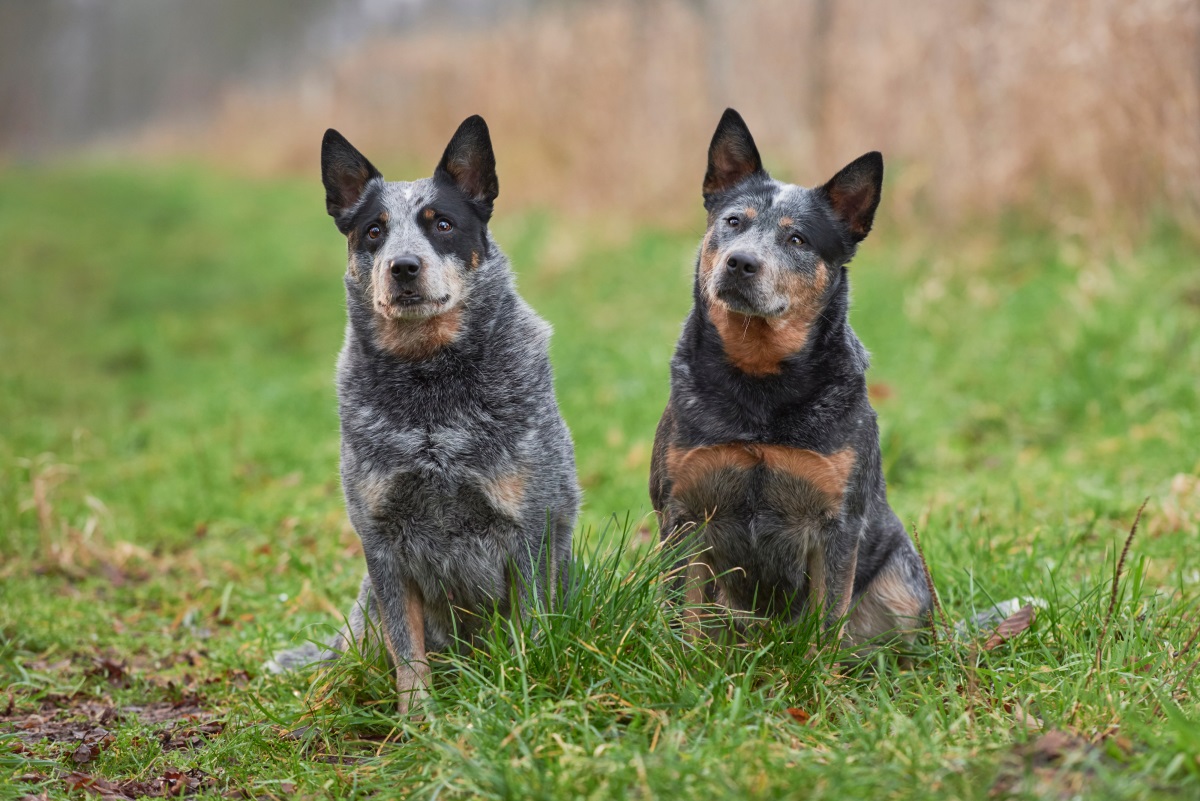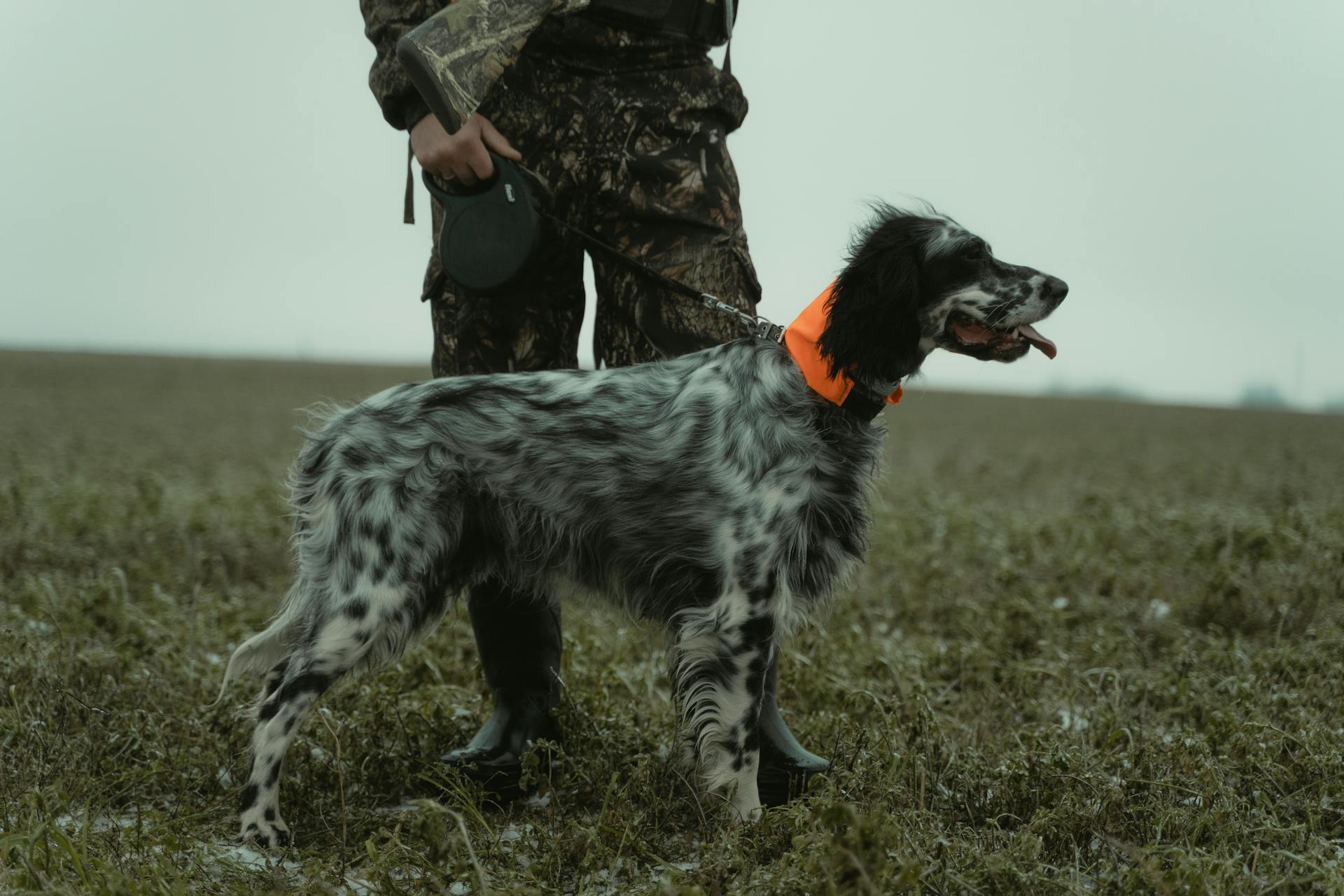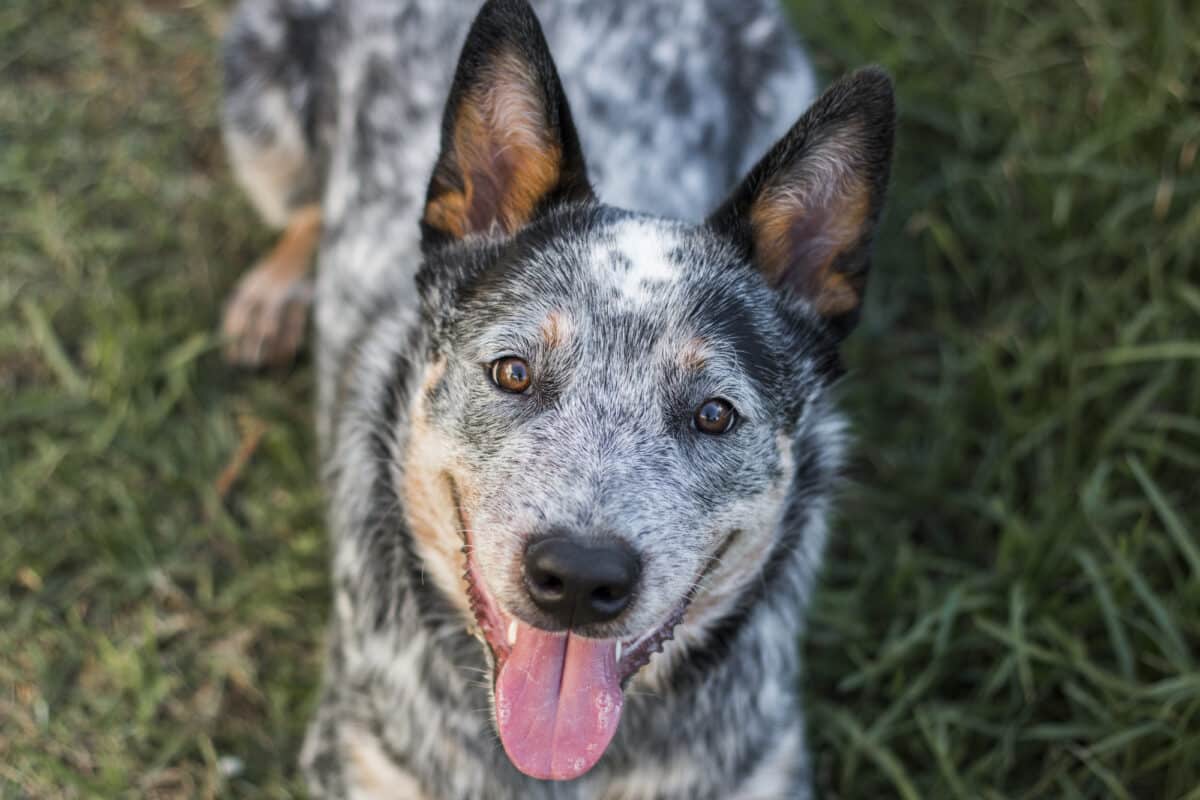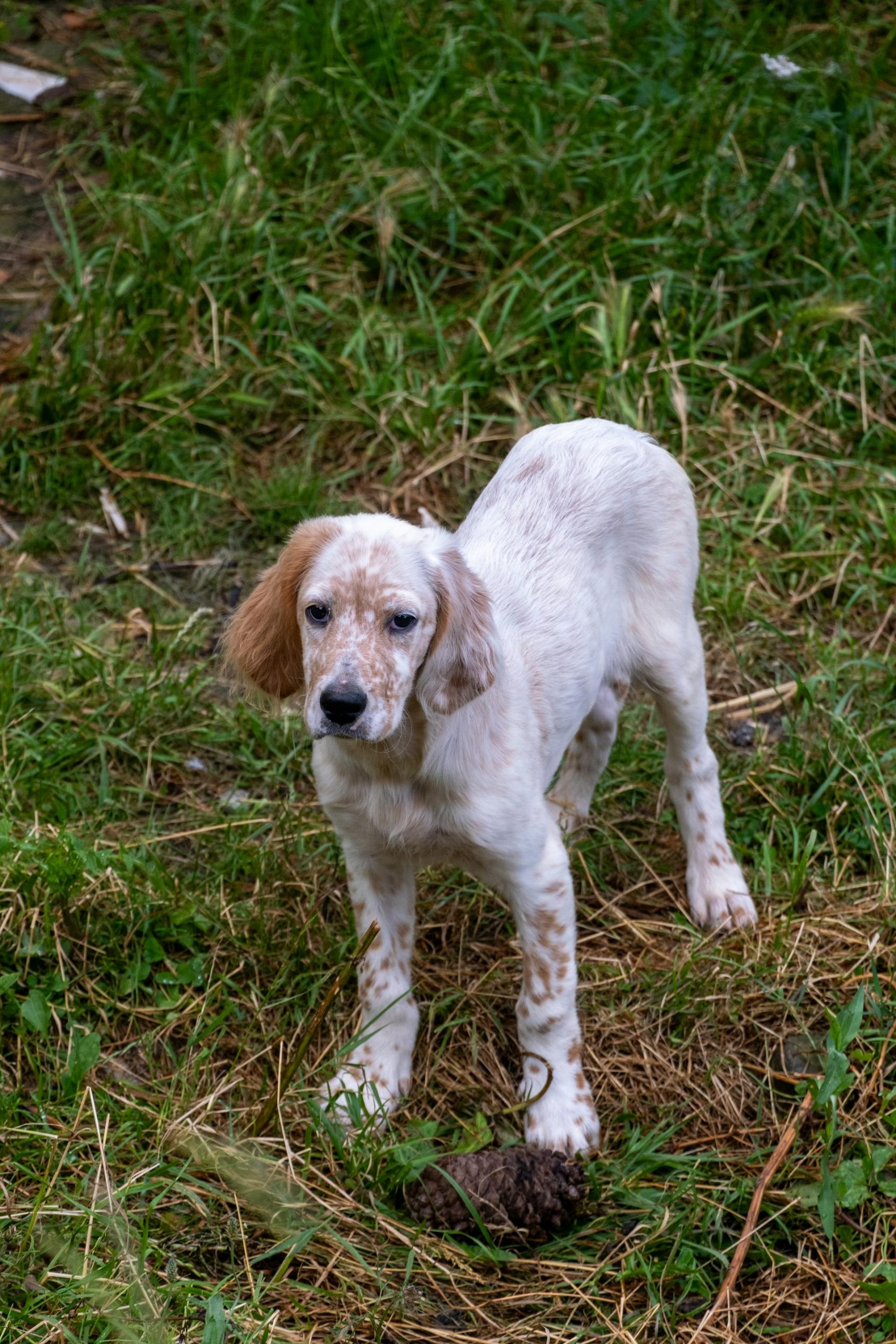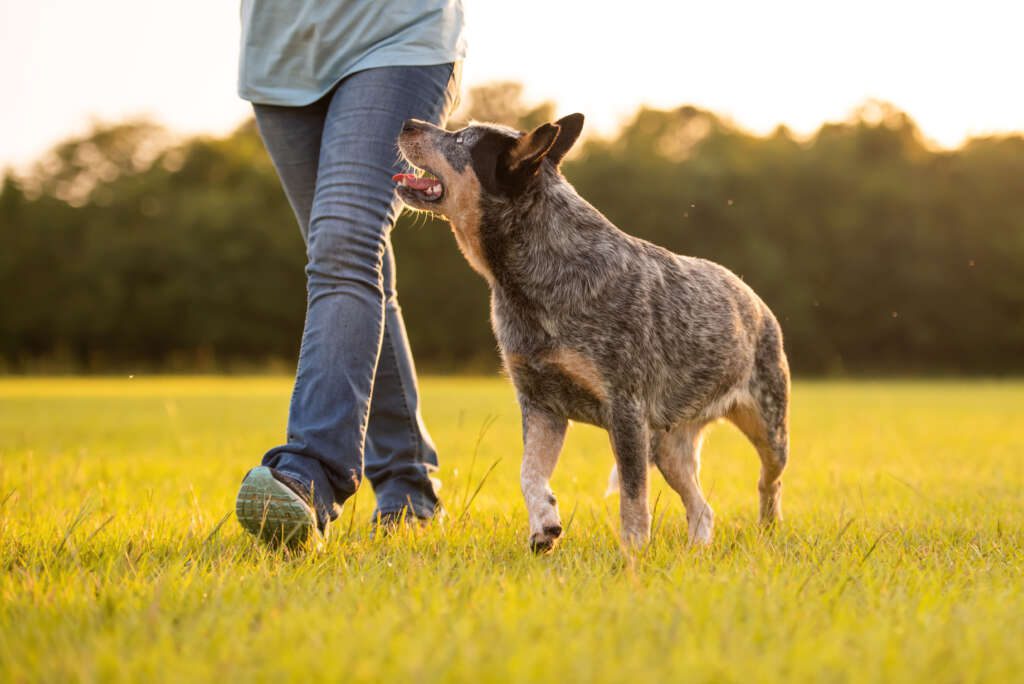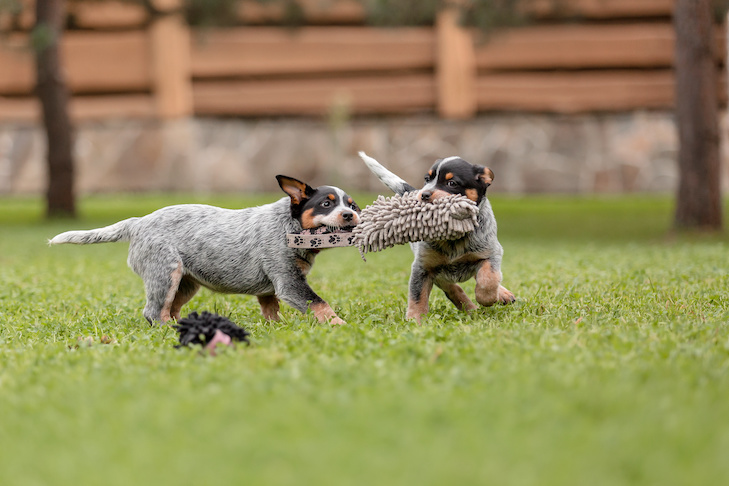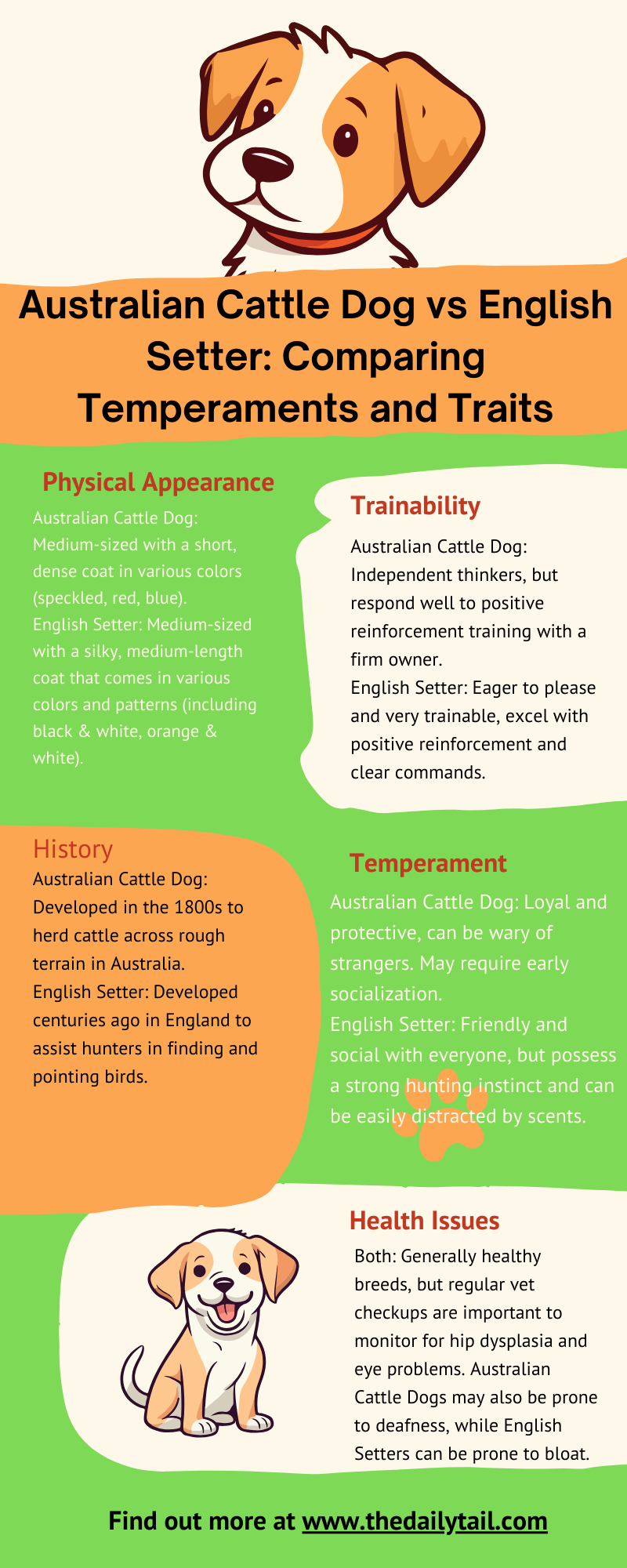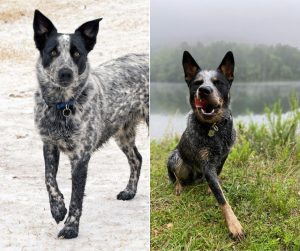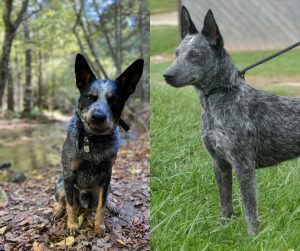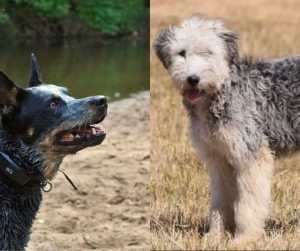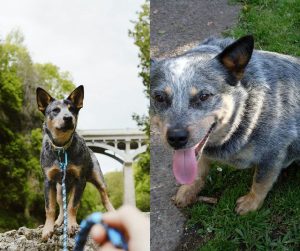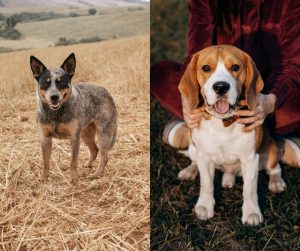Prospective pet parents looking to get a dog should always look at the history, temperament, physical appearance, training and exercise needs, and health risks of dog breeds. Today, we will try to look at two distinct breeds that have a unique story to tell. Let’s take a look at the Australian Cattle Dog vs English Setter dog breed comparison.
These two couldn’t be more different. For example, The Australian Cattle Dog, or Blue Heeler, is famous for its herding abilities. Yet, it excels as a loving and loyal companion as well. As a herding breed, it is best suited for individuals or families with an active lifestyle who can offer consistent dog training and mental stimulation.
Then, we have the the English Setter, a dog praised for its friendly nature and patience with children. You can say he is the ideal family pet.
When looking at these two dog breeds, things are not black and white. Or, as we will see later on, blue speckled or tricolored. We have to take a look at the entire picture.
Finally, the choice depends on understanding what each dog breed will bring to your household and life. How do they match your lifestyle? Let’s take a look.
Key Takeaways
- Both dog breeds have unique qualities, suiting different lifestyles and preferences
- The Australian Cattle Dog is ideal for active owners who can provide structure and activity
- The English Setter is known for its gentle demeanor, making it a good family pet
Origin and History
To fully understand a canine, you have to look at its rich history. In these case, we have dogs that have been around for a while. Their history is a rich tapestry. Let’s take a look through each of them.
Australian Cattle Dog History
The Australian Cattle Dog is a breed with an history. They were developed in the 1840s for the specific task of driving cattle over long distances across tough Australian terrain.
This breed is the result of crossing dogs from England with the native Australian Dingo, creating an exceptionally hardy and intelligent working dog. They rapidly became invaluable to Australian ranchers due to their endurance, herding abilities, and resilience.
Thomas Hall was the one responsible for breeding the first Australian Cattle Dogs. He was the one to come up with the idea to mix the native Dingo with other dogs. That is why nowadays, a lot of people call this canine a Halls Heeler. Or Queensland Heeler due to the place of origin.
Fun fact: Australian Cattle Dogs are often mistaken with Australian Shepherds. While both carry the name Australian, the latter was developed in the United States.
English Setter History
The English Setter, recognized by many for its distinctive speckled coat, dates back to the 14th century. Of the two, the English Setter breed has a longer history. Back in the 14th century, the canine began as a gundog breed. In fact, it is one of the oldest gun dogs around.
Then, in the 19th century, Edward Laverack and Richard Purcell Llewellin thought the Setter can provide much more.
So, they refined and promoted the breed, leading to the beautiful and proficient hunting dogs known today. They’re celebrated not just for their skill in the field but also for their friendly and gentle nature.
You should not mistake the English Setter with the Irish Setter. The latter is completely different in terms of coat color. They might, however, share some ancestry.
Physical Characteristics
I’ve been around dogs for most of my life. And I still cannot stop marveling at different looks. There is no denying that these two are as unique as they come. Let’s take a look at how big they get, what is their coat color, and more. It is time for a closer look at the Australian Cattle Dog vs English Setter dog breed comparison..
Size and Weight
On one side, we have the sturdy and compact Australian Cattle Dogs. These canines pack some muscle, as they were bred for work. Generally speaking, they can grow between 17 and 20 inches and weigh between 35 and 50 pounds.
On the other side, we have the lean and agile English Setter. Do not let his skinny look fool you. They pack plenty of energy. Standing tall at 24 to 27 inches, they can weigh between 45 and 80 pounds.
Coat and Colors
As I said before, these two dog breeds are as unique as possible. I’ve been around dogs for more than 30 years. And I always love meeting new unique dogs. So, with that in mind, the Australian Cattle Dog sports a short coat, allowing it to survive the rough terrain down under. Their coat keeps them cool and doesn’t need much grooming.
These dogs mainly come in two colors – blue and red speckle. The blue can have black, blue, or tan markings, too. It’s pretty neat how unique each one can look! Depending on the coat color, they are known either as a Blue Heeler or as a Red Heeler.
Then we have the English Setter, a pet with feathery fur that’s silky smooth to the touch. Available in variety of colors, their range includes lemon, orange, and blue, often mixed with white. The result is an elegant and regal look.
Their hair is a bit longer, which means they’ll need a bit more brushing to keep looking their best.
Personality and Temperament
For many dog owners, the choice between Australian Cattle Dog and English Setter comes down to personality and temperament. Each of them brings a different set of personality traits to the table. If you want to make an educated decision, let’s take a look at their temperament.
Australian Cattle Dog Temperament
Australian Cattle Dogs are renowned for their work ethic and intelligence, often serving as diligent herding dogs. They show a loyal and protective nature, making them excellent guard dogs for family homes.
Given their herding background, they may exhibit a certain assertiveness, which requires a knowledgeable owner to guide and train them properly. Similar to other herding dog breeds, they have a tendency to be protective of the family. They are not as friendly as the Australian Shepherd, or as agile as the Border Collie.
When it comes to being around kids, they can be good companions, but they may not be as tolerant as other breeds, so supervision is key.
- Personality: Bold, work-oriented, clever
- Affection: Loyal to their owners
- Guarding: Naturally protective
- Temperament: Assertive, may require experienced handling
English Setter Temperament
In contrast, English Setter dogs are known for their gentleness and friendliness, making them a great fit for families with children.
Their personality shines through as affectionate and sociable, often displaying a strong bond with their human companions.
English Setters are also quite intelligent, but they tend to display a more relaxed nature compared to the more intensive energy levels found in Australian Cattle Dogs.
- Personality: Gentle, friendly, affectionate
- Affection: Very friendly and great with kids
- Guarding: Less protective than Australian Cattle Dogs
- Temperament: Relaxed, intelligent, and sociable
Health and Lifespan
Prospective pet parents want a dog that will spend a lot of years with the family, right? Well, that is why you need to understand the different health risks and concerns of each dog breed. Let me help you pick a furry friend that is healthy and will stick around for a long time.
Common Health Issues
Herding and working dogs like the Australian Cattle Dog are generally healthy. Yet, even a healthy herding breed has its own share of health concerns to watch out for.
For example, they are prone to hip dysplasia, a condition that affects the hip joint and can cause pain or lameness. They can also face progressive retinal atrophy, an eye condition that can lead to blindness if not caught early. Similarly, deafness is a concern and can be checked for from an early age.
On the other side, English Setters are sweet souls with their own set of health worries.
Cancer is sadly a more common illness in this breed. They also can get elbow dysplasia, causing issues in their elbow joints. Lens luxation is another issue; it’s when the lens in the eye pops out of place and can be quite painful.
Average Lifespan Comparison
Now let’s take a look at the average lifespan:
- Australian Cattle Dog usually live between 12 to 15 years. And if you provide enough love, exercise, and good care, they will enjoy a happy life. Sometimes, they might reach up to 18 years
- English Setter are generally around for 10 to 12 years. They have a bit shorter life than the Australian Cattle Dog. Provide proper nutrition and exercise, and they fill your life with lots of joy and affection
Care and Maintenance
When it comes to keeping an Australian Cattle Dog or an English Setter happy and healthy, proper care and regular maintenance are key. They both have their unique needs when it comes to grooming and exercise, which are important to consider for their well-being.
Grooming Needs
Australian Cattle Dogs:
- Hair: Short coat that is easy to care for
- Shedding: They do shed, so regular brushing helps keep loose hair under control
- Matting: Less of an issue due to their short hair
English Setters:
- Hair: Have a longer coat that requires a bit more attention
- Shedding: Regular brushing is also needed to manage shedding
- Matting: They may develop mats without proper care, so more frequent grooming is essential
Exercise Requirements
Australian Cattle Dogs:
- Energy Level: High energy dogs that need lots of daily activity
- Exercise Needs: They thrive on tasks and activities, like running, playing, or even working
English Setters:
- Energy Level: They are also active but can be more laid-back compared to Australian Cattle Dogs
- Exercise Needs: Need regular exercise like walks or playtime in a secure area
Suitability for Families
Choosing the right dog for a family is a big decision. Here we’ll talk about how well Australian Cattle Dogs and English Setter dogs fit into home life, especially with kiddos and other furry friends.
Interaction with Children and Other Pets
Australian Cattle Dog:
- Children: They have a rep for being okay with kids. This means they can hang out with children, but their tolerance might not be as high as you’d want
- Children: For the best results, they need training and socialization from puppyhood
- Other Pets: If raised together, they generally get along with other pets. But watch out, their herding instincts could kick in, leading to some chasing games that not all pets appreciate
English Setter:
- Children: English Setters are a big yes for families with kids. They’re known for their gentleness and patience, making them super kid-friendly
- Other Pets: They’re usually great with other animals. This breed is likely to treat other household pets as part of the gang
Adaptability to Living Spaces
Australian Cattle Dog:
- Space Needs: They’re pretty flexible but do best with lots of room to move and run
- Space Needs: A backyard is ideal
- Apartment Living: They can adapt to apartments but need plenty of exercise to stay happy and healthy indoor pups
English Setter:
- Space Needs: They’re cool with a good-sized yard and love to stretch their legs with a good run
- Apartment Living: They can cope with apartment living as long as they get their daily dose of exercise to burn off energy
Training and Intelligence
When picking a four-legged friend, how easy they are to train and how smart they are can really make a difference. This holds true for both the Australian Cattle Dog and the English Setter, two breeds known for their distinctive traits in these areas.
Trainability
Australian Cattle Dog: They’re whip-smart and have a lot of energy, making them a dream to train if you know what you’re doing.
- Australian Cattle Dog: But they might not be the best pick for someone who’s never trained a pup before
- Australian Cattle Dog: They need someone who can guide them with a firm, but kind hand, and can keep up with their active minds
- Key Traits:
- Intelligence: High
- Novice Owner Friendly: Not particularly
- Stubborn Tendencies: Can be, if not trained properly
English Setter: They’re like the friend you invite over for a game night who’s cheerful and plays well with others, including kiddos.
- English Setter: Training them is usually a joy because they just want to please. Plus, their friendly nature means they’re less likely to give you a hard time.
- Key Traits:
- Intelligence: Smart
- Novice Owner Friendly: Yes, quite
- Sensitive: They tune in to how you’re feeling
Intelligence and Learning
Both the Australian Cattle Dog and English Setter are bright, but they show it in different ways.
Australian Cattle Dogs are the energetic go-getters who love a mental challenge. Give them a job, teach them tricks, keep them busy, and they’re happy campers.
On the other hand, English Setters might not be looking for the same kind of mental workout. They’re more laid back but still catch on quickly to what you’re teaching them.
English Setters have a playful side that makes learning fun, as long as you keep things positive and engaging.
Breed Considerations
When choosing between an Australian Cattle Dog and an English Setter, prospective owners should consider how breed characteristics fit with their lifestyle, including behavioral traits and the potential costs involved.
Behavioral Traits
Australian Cattle Dogs are independent and have a strong work ethic, reflecting their herding dog heritage. They are often reserved with strangers, making them suitable as a guard dog.
Australian Cattle Dogs also have a high prey drive and a tendency to be territorial. These traits may lead to issues unless they receive proper training and socialization.
On the other hand, English Setters are known to be friendly and good-natured with people, including children. They are usually very pleasant around other pets.
As they were originally bred for hunting, they exhibit moderate prey drive and can sometimes be distracted by smells. While not as territorial as their Australian counterparts, English Setters do retain some instincts to roam.
Cost of Ownership
Owning a pet comes with various expenses, from initial purchase to daily upkeep. Here is a simple breakdown:
| Expense Category | Australian Cattle Dog | English Setter |
|---|---|---|
| Initial Price | $$ | $$ |
| Food | $ per month | $ per month |
| Grooming | Low | Moderate |
| Medical | $-$$ per year | $-$$ per year |
| Training | $$ | $$ |
Initial prices for both breeds can vary but are generally in the moderate range, often dependent on pedigree and availability. Both breeds are recognized by the American Kennel Club (AKC), which can influence price.
The Australian Cattle Dog typically has a longer lifespan, possibly leading to extended medical costs.
Grooming costs are relatively low for Australian Cattle Dogs due to their easy-to-manage coats, while English Setters require more attention to grooming.
Investment in training is important, especially for the more stubborn and independent Australian Cattle Dog. This translates into higher initial costs but can save money and stress in the long run by preventing behavioral issues.
Comparison Summary
Looking at these two dog breeds, it is evident they both bring something special to a family. Loyal and loving, they find different ways to bring joy to the family. Hopefully, you understood their different roles.
Bred to herd cattle, the Australian Cattle Dog is a hard worker. These dogs need plenty of physical activity and mental stimulation. They are happiest when they have a job to do.
The English Setter, one of the oldest gun dogs, began as a hunting buddy. Their gentle demeanor and friendly personality makes them a wonderful family pet.
Both breeds are pretty sturdy. Of course, they each have their own health concerns specific to their breed, so it’s a good idea to know what those are.
When looking for a new four-legged companion, consider the size and temperament too. Males and females can differ in size and personality within the same breed.
So, whether you go for a male Aussie Cattle Dog or a female English Setter, you want to look for the one that matches your family’s vibe.

